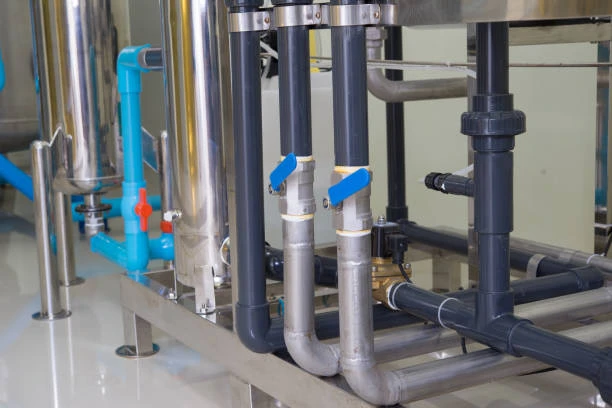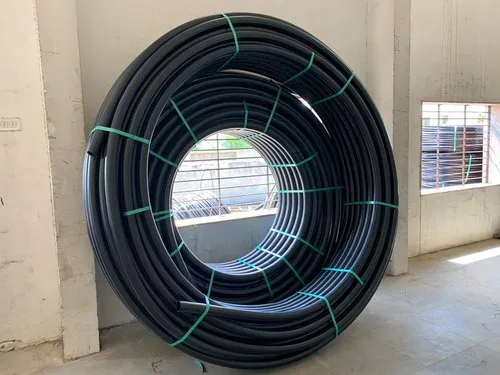Recent High Density Polyethylene (HDPE) Pipe Trends
The world keeps changing, and so does the way we build infrastructure. One material that continues to grow in popularity is HDPE pipes. If you’re in construction, plumbing, water management, or gas distribution, you’ve probably come across this term quite a bit. But what exactly is going on with HDPE pipe these days? Let’s talk about the latest trends and why more people are choosing this material over traditional piping systems.

What Makes HDPE Pipe So Popular?
HDPE (High Density Polyethylene) pipe has taken over many industrial and municipal applications for a reason. This pipe offers flexibility, corrosion resistance, and a long service life. Compared to metal or concrete pipes, HDPE stands up better against chemicals, ground movements, and pressure changes. Plus, installation tends to be faster and more cost-effective.
Unlike older pipes that crack under pressure or rust over time, HDPE pipe handles tough environments with ease. And because it doesn’t corrode, it works great for underground water and gas lines where maintenance gets expensive.
Growing Use in Water Infrastructure
One of the biggest recent trends in HDPE pipe usage is in municipal water systems. Cities around the world face aging infrastructure, and replacing old metal pipes with HDPE offers a smart solution. Water utilities love how HDPE reduces leaks and improves flow. It’s especially helpful in areas with seismic activity or unstable soil because HDPE can bend without breaking.
Contractors also appreciate the lightweight nature of HDPE pipe. They can transport and install it with fewer workers and less heavy machinery. That helps reduce project timelines and labor costs—big wins for both government and private projects.
HDPE in Agriculture and Irrigation
Farmers and large-scale agricultural operations also lean toward HDPE. This material holds up well in the sun and extreme temperatures. It doesn’t split easily, even when buried or exposed to the elements. Farmers use it for everything from irrigation systems to water delivery for livestock.
In countries facing water scarcity, HDPE pipe has become a go-to material for efficient drip irrigation systems. It allows farmers to control water flow better, cut down on waste, and improve crop yields. It’s all about doing more with less, and HDPE makes that possible.
Sustainable and Eco-Friendly Material
Sustainability matters more than ever in today’s world, and HDPE pipe checks a lot of green boxes. Manufacturers can recycle and reuse HDPE, which helps reduce plastic waste. Its long lifespan—often 50 years or more—also means fewer replacements and less material in landfills.
The energy used to produce and transport HDPE is significantly lower than what’s needed for steel or concrete pipes. Plus, fewer leaks and breaks mean less environmental damage during its use.
Gas Distribution Keeps Relying on HDPE
Gas companies continue to count on HDPE for distribution networks. Why? Because it’s safe, durable, and cost-effective. HDPE pipes don’t spark, rust, or leak easily, and they perform well in a wide range of temperatures. That makes them ideal for both residential and industrial gas lines.
HDPE’s flexibility also allows installers to create long, continuous runs without joints. Fewer joints mean fewer potential failure points—another reason gas providers love this material.
New Joining Technologies
Fusion technology has taken HDPE pipe installation to the next level. Heat fusion joins pipe sections together to create a leak-free bond that’s even stronger than the pipe itself. Recent developments in electrofusion tools and automatic machines have made this process faster and more reliable.
Contractors now use advanced GPS and robotic alignment tools to ensure precision and efficiency during the fusion process. These tools reduce human error and speed up installation in tight or complex spaces.
Smart HDPE Pipe: The Future Is Here
HDPE pipe isn’t just tough—it’s also getting smarter. Manufacturers have started embedding sensors into the pipe walls. These sensors track temperature, pressure, and flow in real-time. Engineers can monitor the system remotely and respond to issues before they become big problems.
This type of “smart pipe” works well in industries where safety and uptime are critical, like oil and gas or large-scale municipal water systems. It’s still early, but expect to see more smart HDPE pipe in the near future.
Global Growth and Market Trends
Developing countries in Asia, Africa, and South America are rapidly expanding their infrastructure, and HDPE pipe plays a major role. These regions need durable, low-maintenance piping systems for clean water and gas. Because HDPE is affordable and easy to install, it fits the bill perfectly.
Meanwhile, regulations in Europe and North America continue to push for more environmentally friendly materials, and HDPE pipe lines up well with those goals. The market shows no signs of slowing down. In fact, analysts expect global demand for HDPE pipes to keep rising sharply in the next 5 to 10 years.
FAQ About HDPE Pipe
Q1: What does HDPE pipe stand for?
A: HDPE pipe stands for High Density Polyethylene pipe. It’s a strong, flexible plastic pipe used in water, gas, and sewage systems.
Q2: Is HDPE pipe better than PVC?
A: It depends on the job. HDPE offers better flexibility and impact resistance, especially for underground or high-pressure systems. PVC is more rigid and works well for low-pressure or indoor plumbing.
Q3: Can I use HDPE pipe for drinking water?
A: Yes, you can. Most HDPE pipes meet safety standards for potable water. Just make sure you choose pipe labeled as food- or drinking water-safe.
Q4: How long does HDPE pipe last?
A: HDPE pipe often lasts over 50 years if installed and maintained correctly. Its durability makes it a great long-term solution.
Q5: Is HDPE pipe environmentally friendly?
A: Absolutely. It’s recyclable, energy-efficient to produce, and reduces leaks that waste water and energy.


















